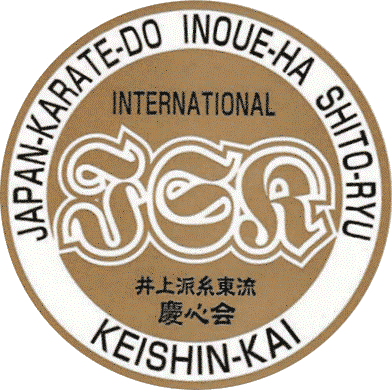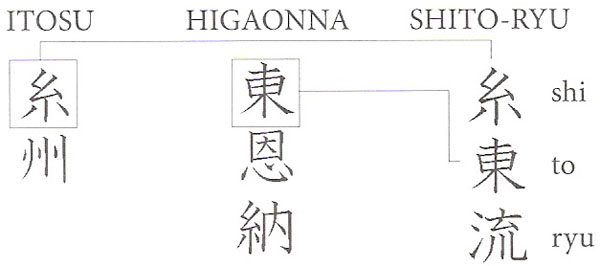Shito-ryu Karate
Again lacking formal names, besides referring to style by area, people sometimes referred to the various schools of Karate by putting the names of Grand Masters and the Katas (forms) together thus creating a label for the particular school or kata. The Originator of Shito-ryu, Grand Master Kenwa Mabuni initially practiced under the shuri-te master, Mr. Itosu, and then went on to study under the naha-te master, Mr. Higaonna. Mr. Mabuni was not only skilled in Karate, but also practiced weaponry such as Bo, Sai, Tonfa, Kama and Nunchaku. Mr. Mabuni founded his new style of Karate by blending together the names of his two great teachers and the Japanese characters that represent them. The first character representing Itosu is pronounced SHI (SHE) and the first character representing Higaonna is pronounced TO (TOE).
The combination of the two names forms the karate style now known throughout the world as SHI-TO-RYU (RYU means style). The same idea of combining Japanese characters is true of the term “Karate-do” itself. “Karate-do” is: kara = “empty” – te = “hand” – do = “way” (he empty hand way).
Grand Master Mabuni was one of the original few Okinawan masters to introduce the art of karate to mainland Japan in the early 1920s. Initially karate techniques were thought to be too dangerous to practice as a sport. While the earliest inter-collegiate duals allowed basics, kata demonstrations and one and three-step sparring, karate tournaments did not appear in Japan until the middle of the 1950’s. By limiting the techniques allowed and by introducing a scoring system, large tournaments became a possibility and sport karate was introduced in Japan and subsequently throughout the world. The rules of international karate competition, which continue to evolve today, are formulated for use in the most prestigious tournaments in the world by the World Karate Federation (WKF). Today Shito-ryu is one of the four major Japanese styles of karate in the world (along with Shotokan, Goju-ryu and Wado-ryu).

